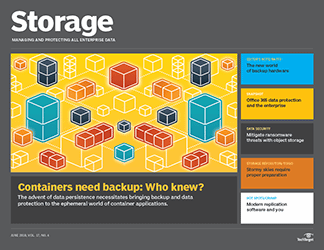PRO+ Premium Content/Storage
Access your Pro+ Content below.
Use object storage technology to fight ransomware infection

This article is part of the Storage issue of June 2018, Vol. 17, No. 4
Ransomware was one of last year's most serious cybersecurity threats. It grabbed headlines following the WannaCry attack, which affected more than 200,000 computers across 150 countries. Conventional wisdom has long held that a current backup is the best defense against ransomware. Backing up data is important in the war on ransomware, but you may also be able to add an extra layer of protection through what may seem like an unlikely approach: object storage technology. Object storage makes it difficult -- although not impossible -- for ransomware to infect files. Ransomware encryption To appreciate how object storage can protect data from ransomware, you must understand how ransomware works. There are countless ransomware variants in the wild, which means cyberthieves aren't using a standard algorithm to encrypt victims' files. In most cases, a ransomware infection attacks data at the file level, not at the volume level. There are two main reasons for this. First, ransomware runs under the same security context as the end user ...
Features in this issue
-
Container backup follows data persistence to these ephemeral apps
The advent of data persistence in containers necessitates having data backup in containers. Here's how this is being done and which vendors are leading the way.
-
Office 365 data protection, the enterprise and you
Gain a better understanding of Microsoft Office 365 security and storage management features and how the popular cloud-based productivity and collaboration suite really works.
Columns in this issue
-
What's new with data protection systems? Everything
The next backup hardware you purchase will likely come with integrated backup software. That changes the buying dynamic and complicates the decision-making process.
-
Disaster avoidance requirements ensure business continuity
Include disaster recovery and avoidance requirements as design goals when creating storage and production environments to ensure business continuity during weather events.
